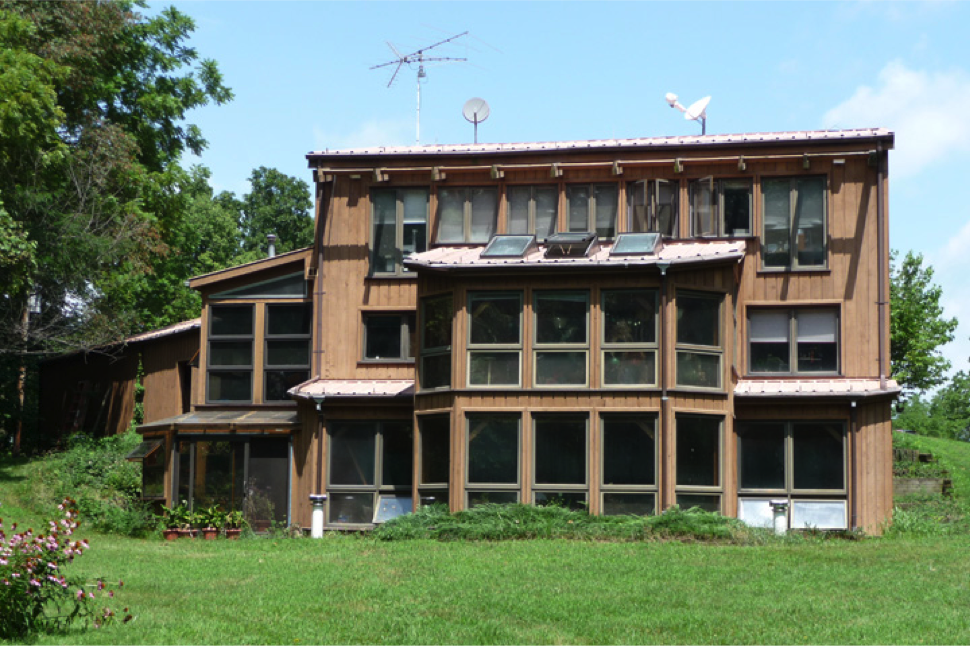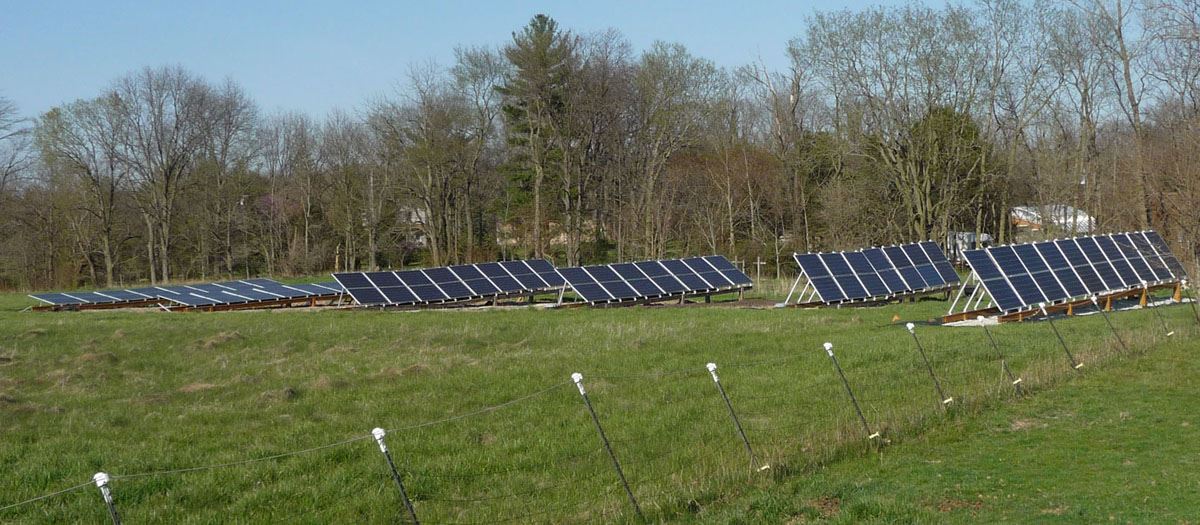Phillip Geil
Phillip Geil - Mahomet, IL
System Details: Helios (2 rows, 32), Evergreen (3 rows, 44) and Suniva (1 row, 20) panels, at optimum summer, spring and fall, and winter tilts (12, 38 and 65°) |
Annual production in kWh: 2008 Wind 8,262, E. Solar 9,739; 2009 Wind 5,434, E. Solar 10,732; 2010 Wind 5686, E. Solar 11,380; 2011 Wind 6210, E. Solar 9991; 2012 Wind 5,998, E. Solar 10,367; 2013 Wind 6105, E. Solar 9,229; H. Solar 11,473; 2014 Wind 5830, E. Solar 9202, H. Solar 11,412. 2015 Wind 5197; E. Solar 9948; H. Solar 12095. 2016 Wind 5909; E. Solar 9548; H. Solar 11583; S. Solar (from 4/13/16) 5068. 2017 Wind 6601, E. Solar 8106, H. Solar 9818, S. Solar 7047. 2018 Wind 5382, E. Solar 9435, H. Solar 11203, S. Solar 8035. 2019 (to 7/1/19) Wind 4480, E. Solar 4789, H. Solar 5067, S. Solar 3820. (E = Evergreen, H = Helios, S = Suniva)
Total installed costs: Wind ~ $45,000; Evergreen solar ~$35,000 – $10,000 State grant and $2,000 Federal rebate + ~$4,500 - $1,600 State grant and $1600 Federal rebate = Total Evergreen solar ~ $39,500 – $15,200 = $25,300. Helios solar ~ $22,000 - $5,400 State grant and $6,600 Federal rebate ≈ $10,000. Suniva solar $9940 – $2980 Federal = ca. $6960. Maintenance: Wind ca. $300/yr, Solar negligible.
Wind system – Bergey 10 kW turbine on 100’ tower; Xantrex inverter replaced by Bergey, 2018. Solar system – 40 180 W + 4 190 W blemished Evergreen thin film panels, 3 refurbished 3.3 kW Xantrex inverters; 32 250 W Helios monocrystalline panels with M215 Enphase inverters; 20 285W Suniva panels with M250 Siemens (Enphase) inverters, UniRac and home built struts. One central inverter replaced with Enphase M190 inverters in Feb, 2014 due to panel short. Others replaced in 2016 and 2017. Panels are retilted 4 times/year, at 12, 38, 65° and 38° (summer, fall, winter and spring), resulting in 13% greater production than installer estimated values for a 30° tilt ground mount and 33% greater than for a 14° tilt roof mount.
For information on house construction (earth sheltered, solar heated, geothermal with ERV and 260’ ground loop, low voltage switching, on-demand gas hot water, fluorescent lighting, timber frame with R50 wall, R70 roof self built SIP panels) see http://www.flickr.com/photos/geil-homestead
For more information on the above: phgeil@gmail.com
Personal Story:
 It was the thing to do to go along with our energy-conserving house. Note that we use much more electricity than a normal house, in the winter particularly, heating water for a number of animals and in the summer operating fans for a 30 x 60 greenhouse. We have on the order of 5000 W of animal water heaters. The wind was installed first, in Feb, 2007, with the first 8 kW of the solar self-installed with central inverters 6 months later. Another 8 kW was self-installed with micro-inverters in late 2012 and the last 5.7 kW in April of 2016. Note the substantial decrease in cost, even before rebates. Net-metering, with time-of-use (Power Smart) pricing, is used.
It was the thing to do to go along with our energy-conserving house. Note that we use much more electricity than a normal house, in the winter particularly, heating water for a number of animals and in the summer operating fans for a 30 x 60 greenhouse. We have on the order of 5000 W of animal water heaters. The wind was installed first, in Feb, 2007, with the first 8 kW of the solar self-installed with central inverters 6 months later. Another 8 kW was self-installed with micro-inverters in late 2012 and the last 5.7 kW in April of 2016. Note the substantial decrease in cost, even before rebates. Net-metering, with time-of-use (Power Smart) pricing, is used.
What tips do you have for someone considering or moving forward with a solar installation?
If possible install on the ground to permit tilting 4 times/year and removal of snow. Also note that Solar is much more cost effective than wind. At the time we installed the wind there was no rebate or tax credit for wind.

